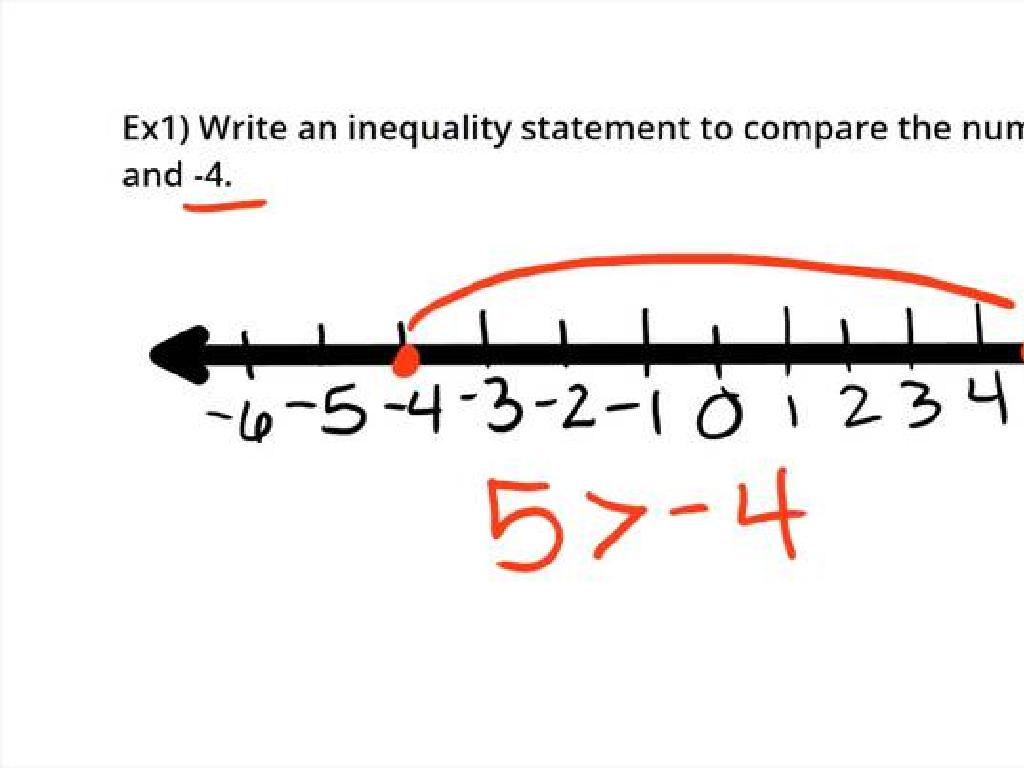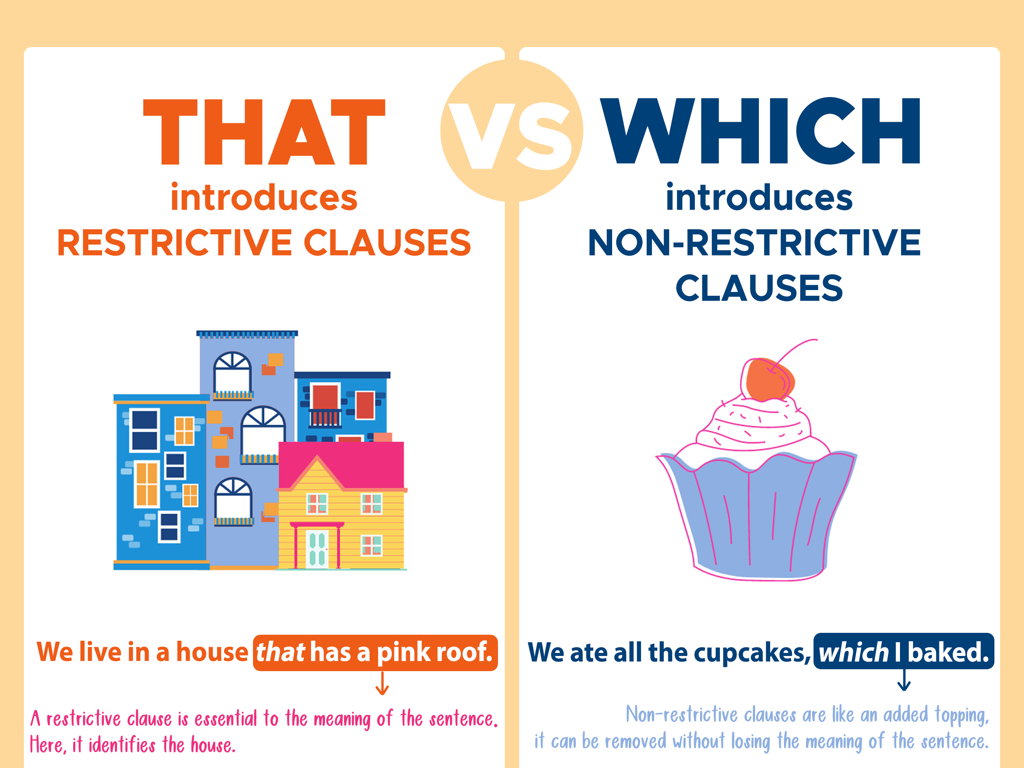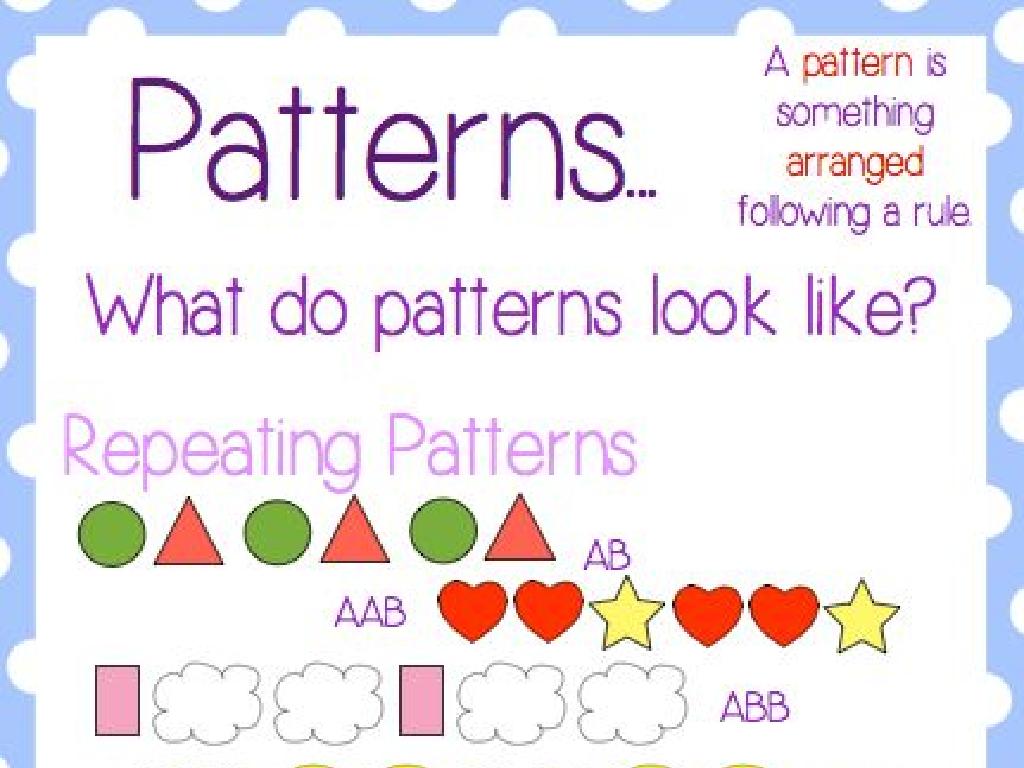Determine The Meaning Of Idioms From Context: Set 1
Subject: Language arts
Grade: Sixth grade
Topic: Idioms And Adages
Please LOG IN to download the presentation. Access is available to registered users only.
View More Content
Welcome to Idioms!
– Understanding idioms
– Idioms are phrases with meanings different from the literal words.
– The purpose of idioms
– Idioms add color and expressiveness to our language.
– Everyday idioms
– ‘Piece of cake’, ‘Break the ice’, ‘Hit the books’
– Deciphering meaning from context
– Use surrounding text to figure out what an idiom means.
|
This slide introduces students to the concept of idioms phrases that mean something different than their individual words suggest. Explain that idioms are used to make language more colorful and expressive, and they are often tied to cultural meanings. Provide examples of idioms that they might hear on a daily basis, such as ‘piece of cake’ to mean something easy, ‘break the ice’ for starting a conversation, and ‘hit the books’ to study hard. Emphasize the importance of context in understanding the meaning of idioms, as the surrounding words and sentences provide clues to their figurative meanings. Encourage students to think of idioms they have heard and share them with the class.
Understanding Idioms in Language
– What are idioms?
– Phrases where the meaning isn’t obvious from the words themselves
– Idioms make language colorful
– ‘Raining cats and dogs’ explained
– This idiom means it’s raining very heavily
– Practice with more examples
– Find idioms in sentences and guess their meanings
|
Idioms are an important part of English language arts and understanding them is key to mastering the language. They are phrases where the literal meaning of the words doesn’t match the expression’s figurative meaning. Idioms add a layer of richness and fun to our language, making it more vivid and expressive. For instance, ‘It’s raining cats and dogs’ is a colorful way to say it’s raining very hard. Encourage students to think of idioms as a secret code in language that they can learn to decipher using context clues. In the next class, we’ll practice with more idioms, helping students to not only recognize them but also to understand and explain their meanings.
Understanding Idioms in Context
– Context reveals idiom meanings
– Idioms have non-literal meanings, which context can help us uncover
– Analyze sentences for idioms
– Look at how the idiom is used in a sentence to guess its meaning
– Guess idioms’ meanings
– Use clues from the sentence to infer what the idiom might mean
– Practice with examples
– We’ll use example sentences to apply our idiom-decoding skills
|
This slide introduces students to the concept of idioms phrases that mean something different from the literal meanings of the words that make them up. The focus is on using context clues to determine the non-literal meaning of idioms. Provide students with sentences containing idioms and guide them to use surrounding information to infer meanings. Encourage them to consider the overall message of the sentence rather than the individual words of the idiom. This slide sets the stage for interactive activities where students will practice this skill with various examples, enhancing their understanding of idiomatic expressions.
Practice with Idioms: Context Clues
– Read sentences to find idioms
– Look for phrases that don’t make literal sense
– Guess the meaning from context
– Use surrounding text to infer meaning
– Discuss guesses with a partner
– Share and compare interpretations
– Review and reveal the answers
|
This slide is designed for a classroom activity focused on understanding idioms through context. Students will practice their analytical skills by reading sentences and using context clues to determine the non-literal meaning of idiomatic expressions. Encourage them to think critically about the text and discuss their ideas with a partner to foster collaborative learning. After the discussion, go over the idioms as a class to ensure correct understanding. Provide guidance on how to use context clues effectively and emphasize that idioms often reflect cultural nuances and may not be directly translatable. This activity will enhance their comprehension skills and prepare them for more advanced language arts concepts.
Understanding Idioms: Set 1
– ‘Break the ice’: Starting conversations
– Used when someone does something to create a more friendly atmosphere.
– ‘Hit the books’: Time to study
– Not about physical books; it means to begin studying.
– ‘Piece of cake’: Easy to accomplish
– It’s not about dessert; it implies that something is very easy to do.
– Class Activity: Guess the meaning!
|
This slide introduces students to common idioms, encouraging them to understand the figurative meaning rather than the literal interpretation. ‘Break the ice’ typically refers to doing something that eases tension and promotes open conversation in a group. ‘Hit the books’ is a phrase used to express starting to study, especially when exams or deadlines are approaching. ‘Piece of cake’ suggests that a task is very easy to complete. The class activity involves students guessing the meaning of these idioms based on context clues. Teachers should prepare to guide the discussion, offering examples and facilitating understanding. Possible activities include creating sentences using these idioms, acting them out, or drawing scenes that represent their figurative meanings.
Exploring Idioms: Uncover Hidden Meanings
– Become detectives of language
– Uncover idioms’ hidden meanings
– Idioms are phrases with meanings not deducible from individual words
– Use sentence clues for the mystery
– Context gives us hints about what idioms truly mean
– Solve the meaning of each idiom
|
In this activity, students will act as language detectives to explore the world of idioms. They will learn that idioms are phrases where the meaning isn’t obvious from the individual words. By examining the context in which the idiom is used, students will use their critical thinking skills to deduce the non-literal meaning of each phrase. Encourage students to look for contextual clues such as the sentence’s subject, verbs, and adjectives, which can provide insight into the idiom’s meaning. This activity will enhance their comprehension skills and enrich their vocabulary. Prepare to discuss several examples of idioms in class and have students share their interpretations and the clues that led them to their conclusions.
Group Activity: Crafting Original Idioms
– Form small groups for idiom creation
– Invent your own unique idioms
– Explain your idiom’s meaning
– What does your idiom express? Is it humor, wisdom, or advice?
– Prepare a sentence using your idiom
– How would your idiom fit into everyday conversation?
|
This group activity is designed to engage students with the concept of idioms by allowing them to create their own. Encourage creativity and discussion within the groups to come up with an idiom that is not only unique but also meaningful. Each group should explain the rationale behind their idiom and how it could be used in context. This will help students understand how idioms function in language. For the teacher: be prepared to guide the students in understanding the difference between literal and figurative language. Have examples of common idioms ready to inspire the students. Possible activities include having each group draw their idiom, use it in a short story, or act it out for the class.
Class Activity: Idiom Charades
– Engage in idiom charades game
– Act out idioms silently
– Use body language to convey the idiom’s meaning
– Classmates guess the idiom
– Think about the idiom’s figurative meaning while guessing
– Enhance idiom retention
|
This interactive class activity is designed to help students learn idioms in a fun and memorable way. Divide the class into small groups and have each student pick an idiom to act out. Remind them that they cannot use words or sounds. This activity encourages students to think creatively about the meaning of idioms and how they can be expressed through actions. Possible idioms for charades could include ‘break the ice’, ‘spill the beans’, ‘hit the books’, or ‘let the cat out of the bag’. This will not only help students understand idioms better but also aid in remembering them through physical activity and peer interaction.
Review and Reflection: Idioms in Language
– Recap on idioms
– Idioms add color to our language and express ideas in vivid ways.
– Significance of idioms
– They show cultural uniqueness and make language expressive.
– Share an intriguing idiom
– Pick an idiom that stood out to you and tell us what it means.
– Discuss the idiom’s meaning
– Explain how context helps decipher the idiom’s meaning.
|
This slide aims to consolidate the day’s learning about idioms. Start by asking students to summarize what they’ve learned about idioms, emphasizing their role in making language more colorful and expressive. Discuss why understanding idioms is crucial for mastering a language, as they often reflect cultural nuances and can be common in everyday speech and literature. Encourage each student to share an idiom that they found particularly interesting, explaining what it means and why it stood out to them. This will help reinforce their understanding of idioms and the importance of context in determining meaning. The discussion will also provide an opportunity for peer learning and for students to appreciate the diversity of language.
Homework: Unraveling Idioms
– Find three idioms in media
– Record the idiomatic sentences
– Note the context of each idiom used
– Interpret the meanings
– Use clues from the context to guess the meaning
– Get ready for class discussion
|
This homework assignment encourages students to actively engage with idiomatic expressions found in everyday media. By locating idioms in books, TV shows, or movies, students will learn how context can provide clues to meaning. They should write down the exact sentences containing the idioms and attempt to interpret what each idiom means based on the surrounding information. In the next class, there will be a discussion where students will share their findings, compare interpretations, and gain a deeper understanding of how idioms function in language. This exercise will enhance their analytical skills and foster a more intuitive grasp of figurative language.






